Let’s talk about how you can carry life-saving medical equipment with you as part of your every day carry (EDC).
Because, just like a gun, if it’s not WITH you — then it’s basically useless!
Ideally, we should all be walking around with BOTH guns and medical gear every single day as part of our concealed carry loadout.
Remember, in part one of this series on Civilian Tactical Combat Casuality Care (TCCC) we learned that the biggest cause of preventable deaths in combat is Hemorrhage from extremity wounds — responsible for 60% of combat deaths.
In other words, our #1 objective is to be able to stop massive bleeding if we ever find ourself in a gun fight (or other emergency situation).
In part two, we talked about putting together your full-sized BOK/IFAK (Blow Out Kit/IFAK) – which is a specialized medical trauma kit that is designed to help you use the TCCC protocols to save your own life or someone elses’s life (Self-Aid/Buddy-Aid).
And a full-size BOK/IFAK is definitely something you need.
How “Civilian” TCCC Is Different …
But just like you need a rifle and a shotgun, they’re not something you carry around with you every day as part of your concealed carry loadout.
They’re too big and it’d be silly to walk around with them. Plus, people would look at you weird.
That’s the difference between TCCC for the military and what we’re doing here.
In other words, we’re talking about Civilian TCCC.
That’s an important distinction because as a civilian, you are most likely NOT going to be carrying around a full “Blow Out Kit” on your person that’s designed for a tactical situation.
In short, put the full-size BOK/IFAK next to your nightstand next to your home defense gun … or in your range bag with all your other shooting gear (glasses/ear protection, etc) … or attach it to your “just in case” battle rattle with plate carrier/chest rig/ruck.
The bottom line is it’s an “overt” medical kit that won’t be on your person all day every day.
How Much Medical Gear Should I Carry As Part Of My EDC?
The short answer?
As much as you can!
Just like the answer to “how much gun should I carry?” is the same.
But like everything in life, carrying a gun or medical equipment is a compromise.
For example, you may want to carry a full-size or even over-size handgun like the Glock 17 or Glock 34 with an extended magazine, weapon-mounted light, etc … and while I know some people that do … you most likely make a compromise and carry the gun that you can actually conceal, comfortably enough that you actually carry it every day.
For some people, this literally is a full-size handgun and they have the lifestyle or mindset to “dress around” the gun or can wear “semi-tactical” clothes all day (looking at you 5.11 tuxedo man!) …
Other people compromise (like me) and carry a good “do it all” size handgun small enough to conceal but plenty big to fight with (Glock 19) along with extra reloads, etc …
And for some others, they work in a professional environment or non-permissive environment (NPE) where they absolutely can’t get caught with a handgun and carry a pocket-sized .380 ACP pistol.
No, a .380 ACP pocket pistol is not what you want if the SHTF, but you know what?
I would much rather someone ACTUALLY CARRY a .380 ACP pistol every single day, then carry a 1911 .45 once or twice a year because it’s too hard to conceal, too heavy, not comfortable, etc etc
Because, again, guns or medical equipment can only help you if they are WITH you when you need them.
So in the same way, you have to figure out how to carry as much gear as possible, so that it works with your lifestyle.
The Two Most Important Pieces of Medical Gear To Carry
At a minimum, you should have two things on your person:
1. Some form of tourniquet and
2. A pressure dressing and/or bandage
Now, depending on how bad you need to make a small kit, you will make a few compromises …
First let’s talk tourniquets.
The two “official” TCCC approved tourniquets are both windlass types. The Combat Application Tourniquet (CAT) and the Special Operations Forces Tourniquet (SOF-T).
That also means they’re somewhat big and clunky and not very concealable.
For our purposes of concealment, one windlass style tourniquet is far superior to the other for Civilian TCCC — that’s the Special Operations Forces Tourniquet SOF-T because it can be “flat folded” for more compact, streamlined, storage.
Take a look at the picture below, especially the one showing the difference in “height” between the two and you can see what I mean. When the SOFTT-W is flat-folded it’s much more streamlined:
As a bonus, the windlass is metal so it’s stronger, and you can get the “wide” version that fits bigger people’s bodies and many people trust this more (because of the extra strength) for bigger extremities like the legs.
How To Flat Fold The SOF-T Tourniquet For Better Concealment and Easier Carry …
Once you’ve done that, you’ve greatly streamlined the profile of one of the best tourniquets on the market.
Now, for a pressure dressing and/or bandage, you can carry gauze or an actual pressure dressing like the Israeli Bandage or Olaes. But the fact is that those pressure dressings are pretty darn big, even when they say “flat packed”.
While gauze is arguably more versatile and can be used on a wide range of injuries and one should not, generally, use hemostatic agents as a first choice for every type of wound — they do give us some advantages for covert carry.
The fact is that hemostatic gauze like Quick Clot are small. They are flat folded, vacuum packed and streamlined and because they can be used to stop massive bleeding they’re pretty versatile.
And because we need all the help we can get in the most minimal package, a good compromise kit — yet still very capable — is a SOFTT-W and Quick Clot hemostatic gauze. You can simply rubber band these two together and you have a quick pocket kit that fits in a front pocket, about the size of a small smart phone or wallet.
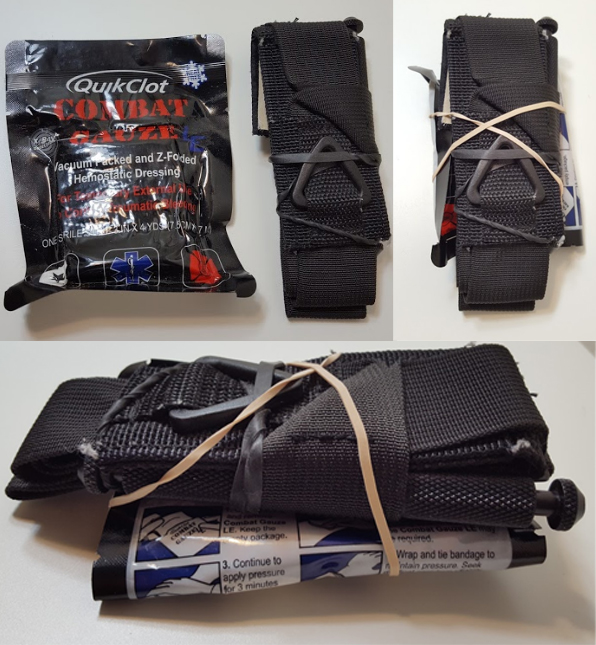
This is the kit that I was carrying for a while. Then I decided to see what commercial options were on the market out there that might also meet our needs.
Best Commercial Option for Tourniquet + Quick Clot …
The best commercial option I have found for this type of setup is by ITS Tactical with their “ITS EDC Trauma Kit“. It contains (from their website):
* QuikCLot Combat Gauze LE (Features X-Ray Detectable Strip)
* SOFTT-W Tourniquet
* Nitrile Gloves (Pair)
* Contents List w/ CoTCCC Care Under Fire Instructions
* Your choice of Coyote Brown or Black Sleeve (Made in USA)
They are vacuum sealed and come with a lightweight nylon sleeve to make it easy to get in and out of your pocket and to protect the vacuum seal of the package.
For me, this fits right in my front pocket. Though you can see they demonstrate it fitting just like a wallet in your back pocket. Wherever you choose to carry it, this is a lot of life-saving med gear in a small package.
And because the tourniquet AND the gauze is vacuum sealed–it’s slightly more compact than the DIY, rubber-band them together option. Plus, the nylon pouch “should” make the setup more durable so you don’t wear through the Quick-Clot packaging or anything like that.
The ‘Minimal’ Trauma Kit …
Now, let’s talk about compromises …
Because let’s face it EVERYTHING in life is a compromise!
First, we compromised and we are most likely going to carry a hemostatic gauze like Quick Clot because while it’s not as versatile as gauze it gives us a super small profile gauze that can stop massive bleeding if something goes really bad.
So we have that.
Next, depending on if we REALLY need to streamline our kit, we might have to compromise on the tourniquet too. That means getting rid of the TCCC-approved, windlass style tourniquet and going with a “secondary” tourniquet simply because it’s more low-profile.
Remember, just like a pocket gun, it’s not going to be the easiest tool to perform with, but it’s MUCH better to have a “lesser” gun or a “lesser” tourniquet than no tourniquet at all!
The Best “Lesser” Tourniquet I’ve Found So Far Is The SWAT-T

Because of a wonderful commenter on the first article named “Rob”, I definitely do not recommend the TK-4 Tourniquet even though it is still popular.
The reason why is he linked me to an official Joint Operational Evaluation of Field Tourniquets by The Naval Medical Research Unit in San Antonio TX where they tested 10 different tourniquets.
In short, BOTH the TK-4 and TK4-L were removed from the study due to mechanical failures and safety concerns.
You can read the full report here.
The bottom line is that the SWAT-T performed much better, but even it wasn’t perfect. In fact, the authors of the study did not like the SWAT-T saying that it took a long time and failed to obtain occlusion for 70% of their tests …
However, that study was in 2012 and there have been more studies on the SWAT-T since that time …
One in military medicine concluded, “Proper application of the SWAT-T is easy and can stop extremity arterial flow but requires some training for many appliers.”
Another in 2015 by the Journal of Special Operations Medicine showed on “distal limbs” (medical speak for forearms and calves) “The SWAT-T™ vs. CAT/RMT/SOFTT-W showed Better Occlusion, Safer Pressures; 10.4% failure in other TQs, zero failures in SWAT-T™ group.” In other words, it worked like a charm on the “distal limbs”.
There is even a pdf of “Documented Saves” with the SWAT-T that is interesting reading you can find here. Here’s an example of some pretty extreme cases the SWAT-T saved lives …
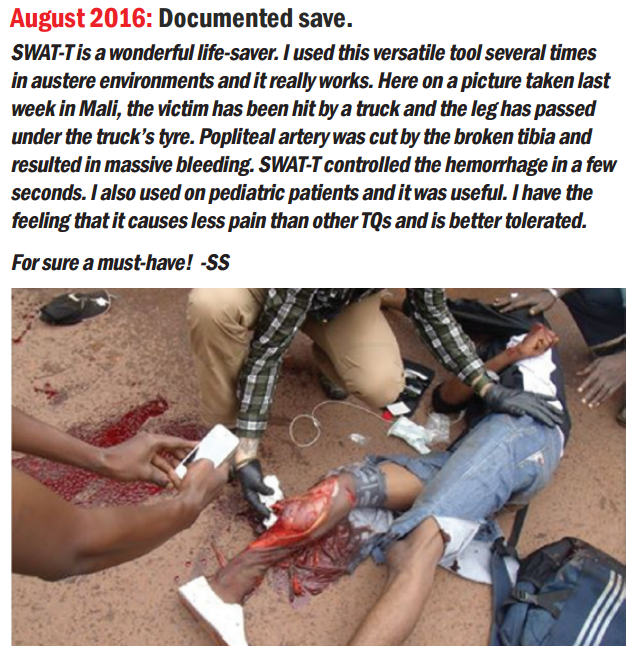 Including the Boston Marathon bombing which is interesting to me because it’s the type of situation we as civilians need to be prepared for …
Including the Boston Marathon bombing which is interesting to me because it’s the type of situation we as civilians need to be prepared for …
Also, the SWAT-T gives you some secondary capabilities and benefits because it can double as a pressure dressing. You can also use it higher up on areas like the groin, because it has no windlass to turn. And as we discussed in part one of this article, if you have kids/children/dogs/etc it can be used on much smaller limbs because it’s an elastic wrap and other windlass style TQ’s can’t be used on those smaller limbs effectively …
In short, the studies and real-life experiences show the SWAT-T works … but like ALL medical gear … it is NOT just something you buy and forget about. You need to watch the videos and you need to practice with it before thinking you can use this to save your life!
Just like a pocket pistol!
You don’t buy a pocket pistol, assume it’s reliable and that you can shoot it well. You take it to the range you run a couple hundred rounds through it and see how accurate and fast you can shoot it, etc before trusting that little gun with your life.
Same here. Get Some Training. Do the work. Don’t be lazy.
Commercial Examples Of Minimal Kits …
Here are two kits from Dark Angel Medical …
First is the POCKET D.A.R.K. TRAUMA KIT.
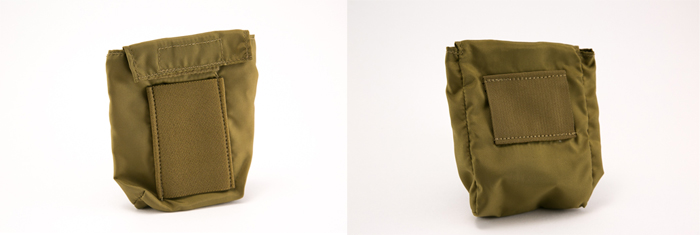
Dark Angel says this “Our pocket-sized ‘minimalist’ version of our D.A.R.K., called the “Pocket D.A.R.K.” Decreased the size so that it’ll easily fit into a cargo pocket, purse, glove compartment and even the back pocket of a pair of jeans making it your “go to” med kit for everyday use.”
“Comes with a purpose-built protective nylon pouch from First Spear, LLC, in your color choice of Black, Coyote Brown, and Purple.
Vacuum sealed insert comes with:
* 1 x QuikClot Combat Gauze LE
or MIL (MIL-SPEC Kit)
or ChitoGauze XR Pro (ChitoGauze Kit)
* 1 x 1 Pair Nitrile Gloves
* 1 x SWAT-T
* 1 x H&H Mini Compression Bandage
Weight: 7 ounces
Dimensions: 4″ x 4″ x 1″
The nylon pouch has a vertical elastic slot and horizontal one. I believe these are for belt mounting, but as you can see in the pic I took you can jam a SOF-T in there too …
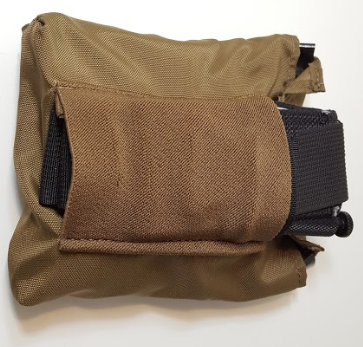
In truth? This is not “front pocket” size. Unless you have BIG pockets. It would probably be perfect if you wear cargo pants or something like that where you have some bigger pockets.
That’s why Dark Angel Medical offers the POCKET D.A.R.K. “MINI” TRAUMA KIT.
They say this about the contents:
“We took the ‘minimalist’ med kit to an even smaller level (roughly a little larger than a pack of cigarettes). When you just don’t have the room for a larger kit but don’t want to sacrifice the ability to “Stop the Bleeding and Start the Breathing,” this is it. The Pocket DARK Mini. It comes vacuum-sealed in a 3 mil thick bag and includes:
1) SWAT-T–easily and quickly applied as a tourniquet or pressure wrap, it can also be utilized as an expedient sling or rib binding.
2) QuikClot Bleeding Control Dressing- This 3″x4′ long length of Z-Folded hemostatic gauze controls bleeding with proven blood-stopping technology, is perfect for narrow wound channels and doesn’t take up a lot of room.
3) Gloves- one pair, nitrile, latex-free gloves to protect you from blood or other bodily fluids.
4) 2′ length of duct tape–multi-use and can be utilized along with the vacuum-bag to make an expedient occlusive dressing.
Dimensions: 4″ H x 2.5″ W x 1″ D Weight: 4.8 ounces”
This is a much smaller, more streamlined piece of kit.
In the pic below you can see a comparison of the size of the POCKET D.A.R.K., vs the SOF-T/Quick Clot DIY rubber band combo, the ITS EDC Trauma Kit, and the POCKET D.A.R.K. “MINI” TRAUMA KIT all lined up …
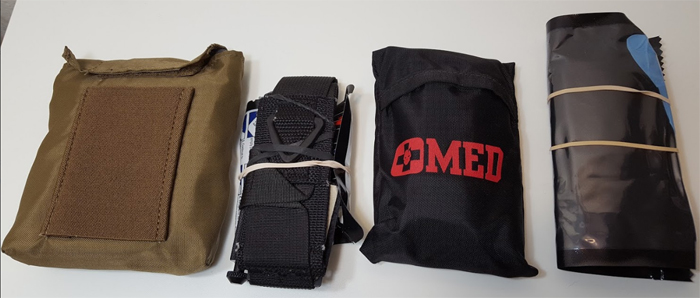
And here’s the height of them all compared too …
As you can see the POCKET D.A.R.K. is NOT “front pocket” sized, unless you have large pockets. It MAY be back pocket sized depending on your pants, but it’s definitely a cargo pocket sized carry method. In that case, add a good windlass tourniquet too while you’re at it.
The POCKET D.A.R.K. “MINI” TRAUMA KIT is much smaller and more streamlined, but as you see from the pics it’s not that much smaller than the ITS EDC kit … and the fact you get a windlass tourniquet with the ITS kit gives it the edge for me.
The aforementioned commentor to my first article, Rob, posted a link to his take on the EDC carry of a trauma kit. This is a great idea if you’re looking for a belt mounted solution. Check out the video below:
The ‘Maximum’ EDC Trauma Kit …
Now, what if you want to carry even more medical gear.
No problem.
There are a couple good kits readily available on the market.
On Greg’s blog, he shows you two pieces of ankle carry trauma kits and one belted mounted solution:
1.) The Ricci Ankle Medical System
2.) The DeSantis ankle magazine holder
3.) The PHLster Flat Pack Tourniquet Carrier
I do not have any experience with ankle carry of medical kits (or ankle-anything actually) because I spend 80% or more of my life in shorts either at home or going out …
So totally check out Greg’s reviews there.
I am EXTREMELY impressed with the COVERT CARRY ADVANCED TRAUMA (CCAT) KIT from Rescue-Essentials.com!
 With this little nylon pouch you can carry a TON of gear. From their website description:
With this little nylon pouch you can carry a TON of gear. From their website description:
“Kit Contents:
1 SOFTT-W Windlass Tourniquet
1 QuikClot Combat Gauze LE
1 H&H Compression Bandage
1 Petrolatum Dressing, 4×4
1 Duct Tape, 2″x36″
1 Nasopharyngeal Airway with lube, 28fr
1 Sharpie Marker
2 Safety Pins, Large
1 Rolled Pair, Black Nitrile Gloves, Large
Weight: 10.3 ounces
Dimensions: 5.75″ x 3.75″ x 2.25″”
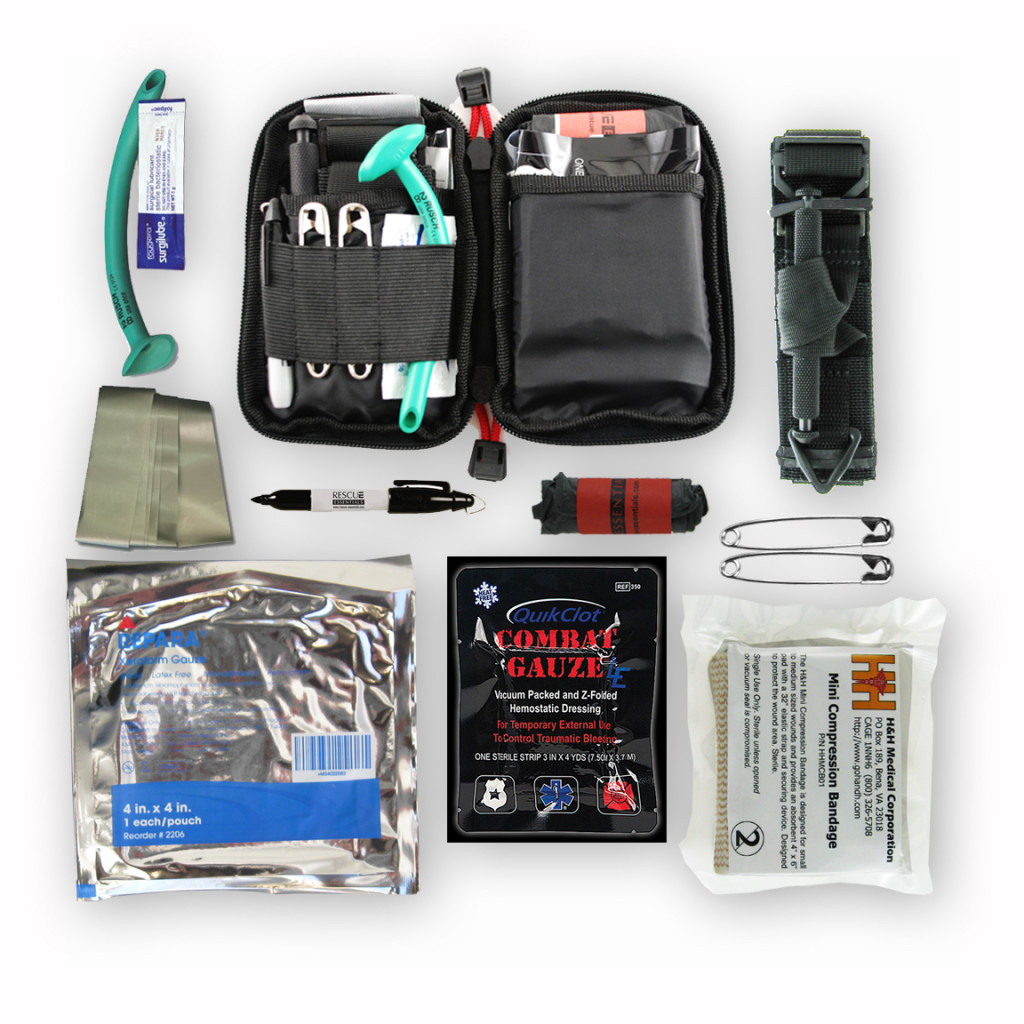 And it’s really not that big as you see it can fit on a belt or you could drop this in a cargo pocket too. It’d be perfect for a woman to carry in her purse, or you could stick it wherever you want. This is about as close as you can come to a full BOK/IFAK that could possibly be EDC in a discreet manner.
And it’s really not that big as you see it can fit on a belt or you could drop this in a cargo pocket too. It’d be perfect for a woman to carry in her purse, or you could stick it wherever you want. This is about as close as you can come to a full BOK/IFAK that could possibly be EDC in a discreet manner.
Highly recommend this one.
Let’s Wrap This Up …
I’m sure there are other kits out there, but this should be enough to get you started …
In short, just like you should carry your gun every day, you should carry some med gear every day.
And just like there is the “best” gun — you may not be able to carry that gun everywhere.
Remember, the gun you DO carry is better than the “perfect” gun you left at home!
It’s the same with med gear.
You’ll be much better prepared if you carry even the minimal solution available than if you just left all your med gear at home because it’s too bulky, too hard to conceal, etc.
Hopefully this has helped you figure out how to carry more life-saving medical gear on your person for concealed carry/EDC.
In the next installment of this series, I’ll attempt to show you how to make the most compact and concealable EDC “pocket/minimal” trauma kit possible.
Please share this with anyone you know who owns a gun and even people that don’t own a gun, or refuse to carry one, and urge them to carry life-saving medical equipment!





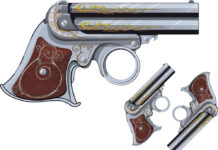




![What Level Holster Should You Be Using? [Video]](/wp-content/uploads/2024/04/Depositphotos_44548439_S-218x150.jpg)
![Case Study: Defensive Gun Use [Video] NSFW](/wp-content/uploads/2025/07/Depositphotos_282075792_S-218x150.jpg)



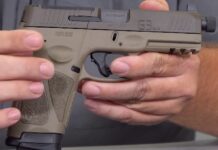


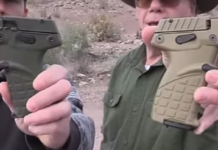


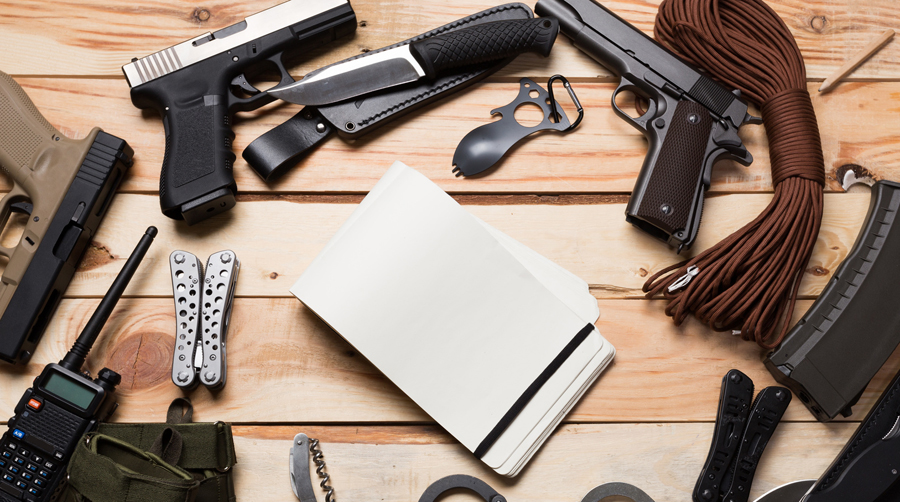
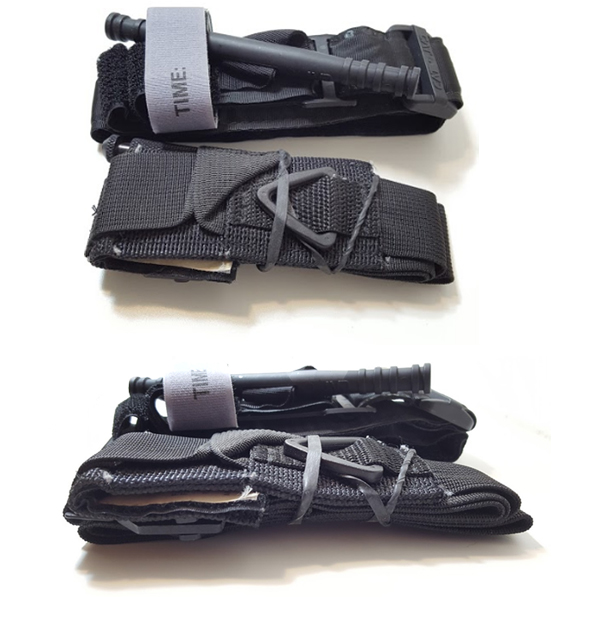
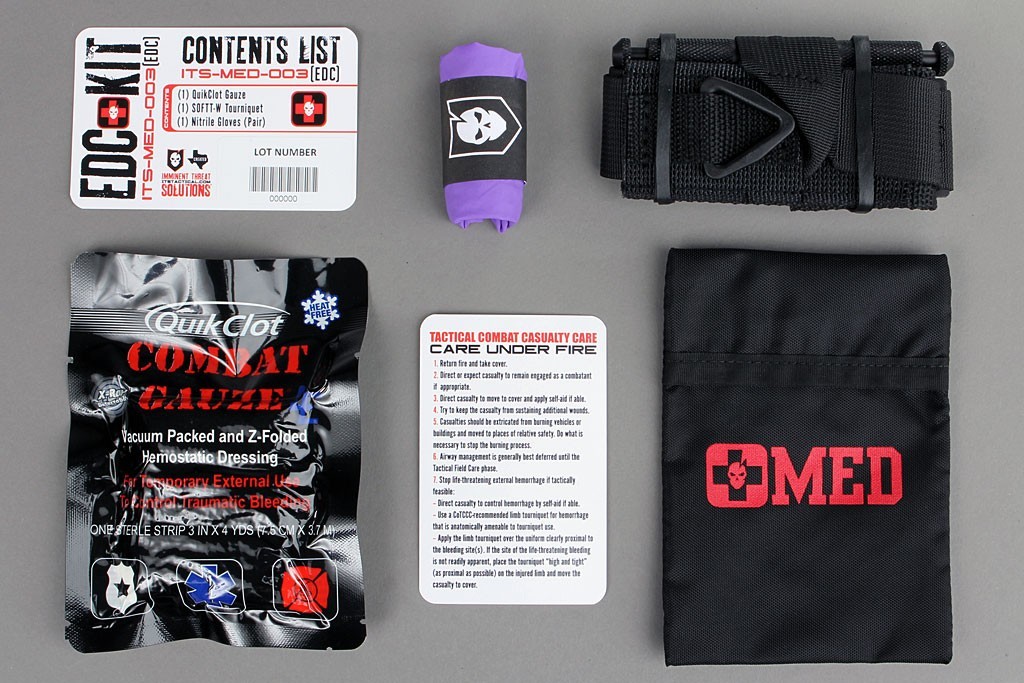
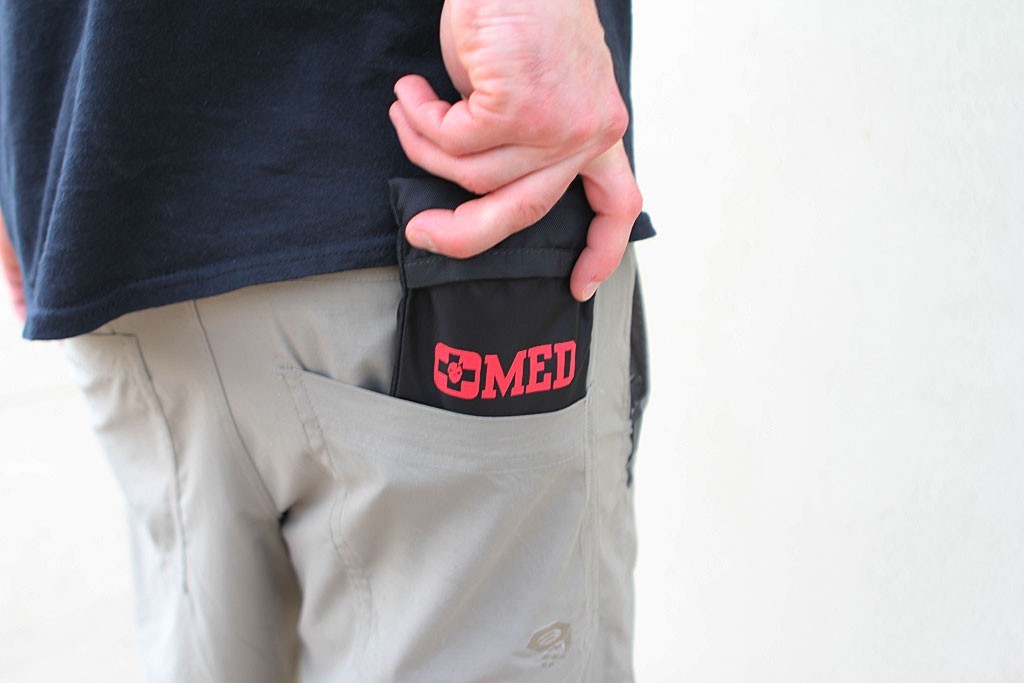


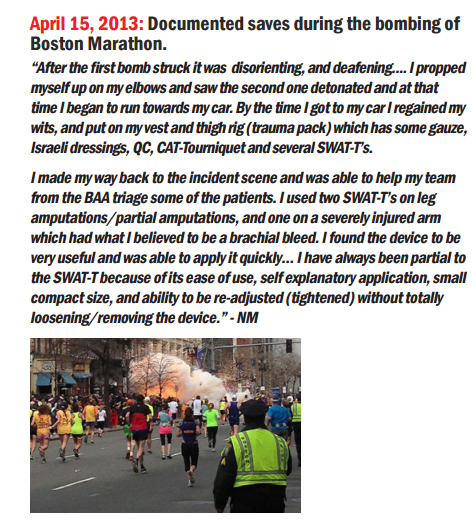
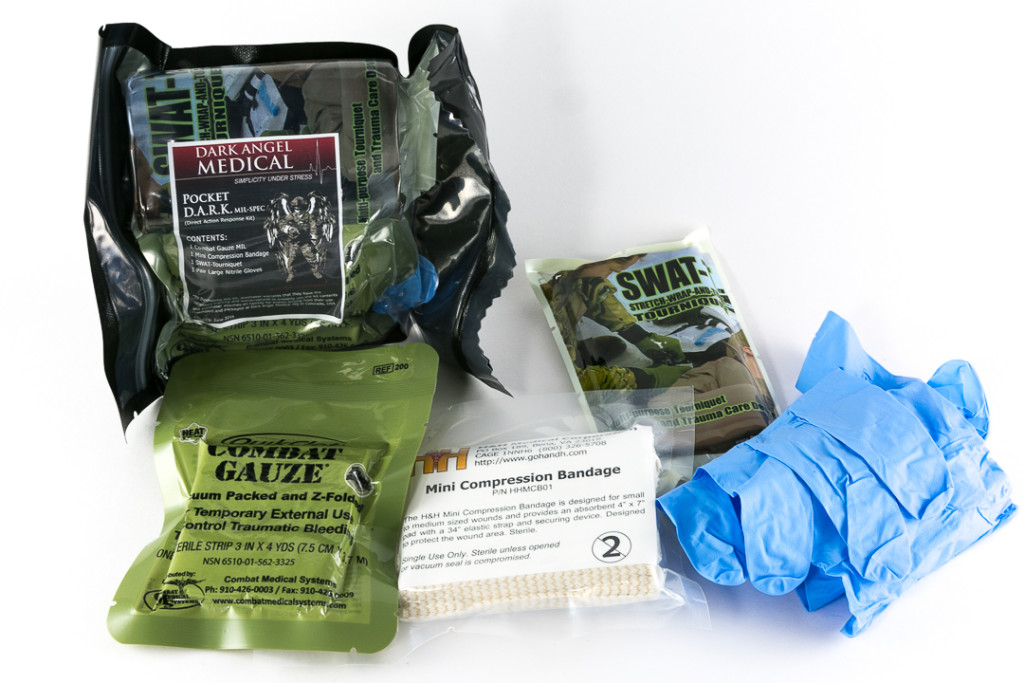
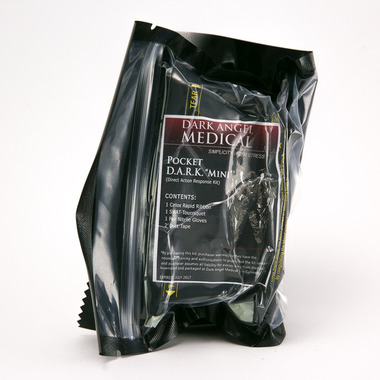
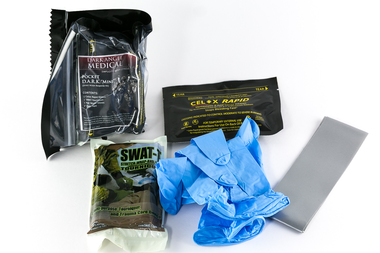
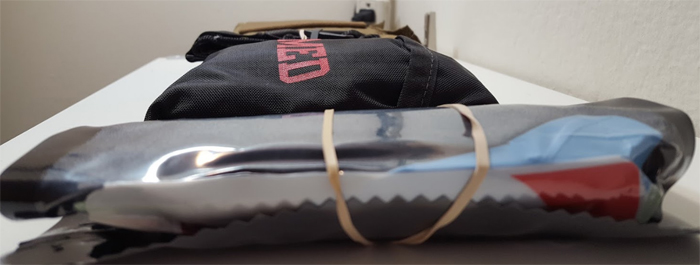
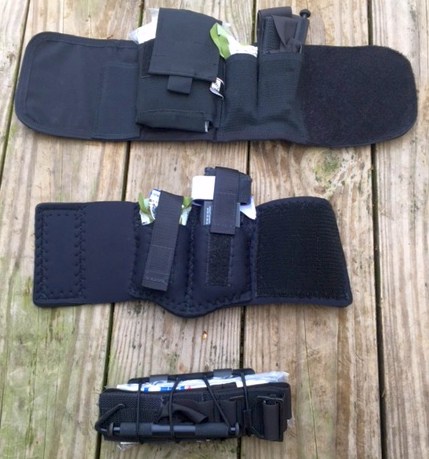










![Optic Ready vs Milled slides? [Video]](/wp-content/uploads/2024/02/image-3-100x70.png)
![[Checklist] What Gear You Need To Take Pistol, Rifle & Shotgun Training Courses [Video]](/wp-content/uploads/2023/07/Depositphotos_275087632_L-100x70.jpg)
![What is in Carter’s 2023 EDC? [Video]](/wp-content/uploads/2023/07/Depositphotos_146856137_L-100x70.jpg)



[…] How To Carry Tactical Medical Gear With You Everywhere You Go (Civilian TCCC pt 3) […]
Thanks for the information. Here’s a link to a video I just put up regarding my take on a Budget Mass Casualty Kit. Certainly not compact, but would be a supplement to your normal trauma kit. Let me know if you have any questions or suggestions. Thanks. https://youtu.be/xJHX79Q2s8M
Outstanding article. One thing I always feel as though we leave out is the consideration of medical (non-traumatic) emergencies in every day life. You are far more likely to encounter a respiratory distress or even a cardiac arrest as opposed to a gunshot wound. For these reasons, I feel as though a CPR Shield is a critical, piece of gear, that is too small to leave out. For adult CPR, the recommendation for bystanders is to focus mainly on compressions. But compression only CPR is not recommended for pediatrics. And what many people don’t realize, is that you can ventilate a person with a pulse. If they are not breathing, or are breathing less than 8 times per minute, then you should be giving them rescue breaths. So I think a CPR shield is incredibly necessary for everyday carry. Another thing I always include with my blowout kits is the antiseptic wipes. As a Medic, I like Vionex Wipes, but whatever one can get their hands on will do. There is no reason to not carry some form of decontamination on you.
Comments are closed.